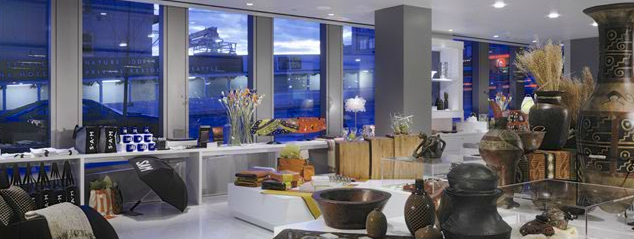Product Development Primer
Culture & Commerce Newsletter, Museum Store Association
By Joan Doyle, doyle + associates
September, 2008
When museum visitors have a positive experience there is a strong desire to hold on to that memory through a purchase. Custom-developed merchandise promotes your institution brand, increases institution visibility and separates your cultural commerce store from general commercial retailers. Done well, it will become some of the best-selling merchandise in your store. Done poorly or without careful planning, it can tie up your fiscal resources and quickly hurt bottom line profitability.
Producing custom products is a complex undertaking that requires considerable lead-time, research, design skills and decision-making. There is no guaranteed formula for success, so planning is vital. If trends peak before merchandise has had an opportunity to sell through, or if a product is simply not successful, it can result in adverse effects on the total retail budget and inventory levels.
Whether in the commercial or museum retail worlds, the tricks to successful product development are the same:
• Know your customer market
• Know their taste and purchasing interests
• Know their spending comfort level/threshold
• Match the first three to popular market/product trends
• Manage your financial risk
• Get out while the going is still good
Market Matters
Be sure to match the product with the market. Know your visitor demographics and target your products to the type of visitor (i.e. cultural tourists, families, young adults, urban boomers, etc.). Do you really know your market? Make no assumptions. Their tastes and interests change over time and you must be aware of those changes. Look at current market trends and your visitor demographics and see where they align. For example, current t-shirt trends use full body images or asymmetrical printing on the front and back of the garment. If you have a younger demographic (15-30 year olds) this styling is a stronger seller than the traditional t-shirt format with the image on the front center chest area.
Don’t be afraid to learn from the commercial world. Visit popular malls seasonally (at least twice a year) and see what the commercial retailers are doing with regard to colors, styling, etc. They are the leaders in fashion styling and by studying their stores you can tap into the new trends without the investment of market or design research. Use that information when designing your own custom product lines.
Lead with Love
Develop product around the images or objects that your visitors love- their favorites. Very few museum shoppers are interested in logos. But they love the Van Gogh painting, or the dinosaur exhibit, or the period room and that’s what they want to take home in a purchase. Always brand custom-developed product with your logo but don’t make the mistake of developing product around the logo alone.
Work with other museum departments to determine which are the most popular images, objects and exhibits in your collections. Be cognizant/aware that curatorial significance may not align with market appeal (an object may be important in a historical context but have limited appeal to a modern market). As a retailer you MUST focus on the images that have stronger customer appeal first and foremost. This can sometimes be a complex and even delicate process, but your focus must be on the earned revenue and sales potential. If you don’t have a curatorial department with which to consult, then get direct customer feedback on their favorites.
Tell a story – Sell a Story
When possible, it is always better to develop a product line or merchandise story rather than one product alone. The same image on multiple types of merchandise strengthens the image appeal and saleability. For example, a t-shirt, cap, mug, key chain and tote bag with the same image can be merchandised together to create a strong visual story which will have broader merchandising impact and sales appeal than just the lone t-shirt. A good story mix, varied in product category and price point will make all the products sell faster. Keep in mind that some products like mugs and magnets are always popular with tourists and museum visitors regardless of the retail market trends. The simplest way to get started in product development, and often the way with the best product sell thru, is to reproduce a favorite image on strong-selling souvenir merchandise such as mugs, magnets, key chains and t-shirts.
It Takes a Village
Learn from your peers’ experience. The museum retail community is incredibly supportive and willing to share information with their peers. Take advantage of this wonderful resource. Reach out to other museum buyers to find out what are their best selling products, who are the best vendors to work with and what to expect in pricing and delivery.
Learn from your own sales history. Is there a general market item that is a perennial bestseller in your store and you constantly reorder it? Consider turning that into a branded product.
When you have a product development idea or design share it with as many other staff members as possible to get feedback. Show them design mock ups or samples and get their responses. Create a product development team; one which can contribute ideas and feedback during the entire product development process.
General Guidelines
To summarize, custom product development requires both diligence and patience and for success it must:
• be ongoing
• identify market trends early
• deliver the product before the trend peaks
• keep investments low (low quantities and modest price points)
• be value-priced for impulse purchasing
Joan Doyle, the principal and owner of doyle + associates, has over twenty years of diversified retail planning and management experience with emphasis on retail specialty store operations, strategic planning, profitability improvements, retail store design and new store openings. Email Joan at [email protected].
Or visit her web site at: www.doyleandassociates.com
